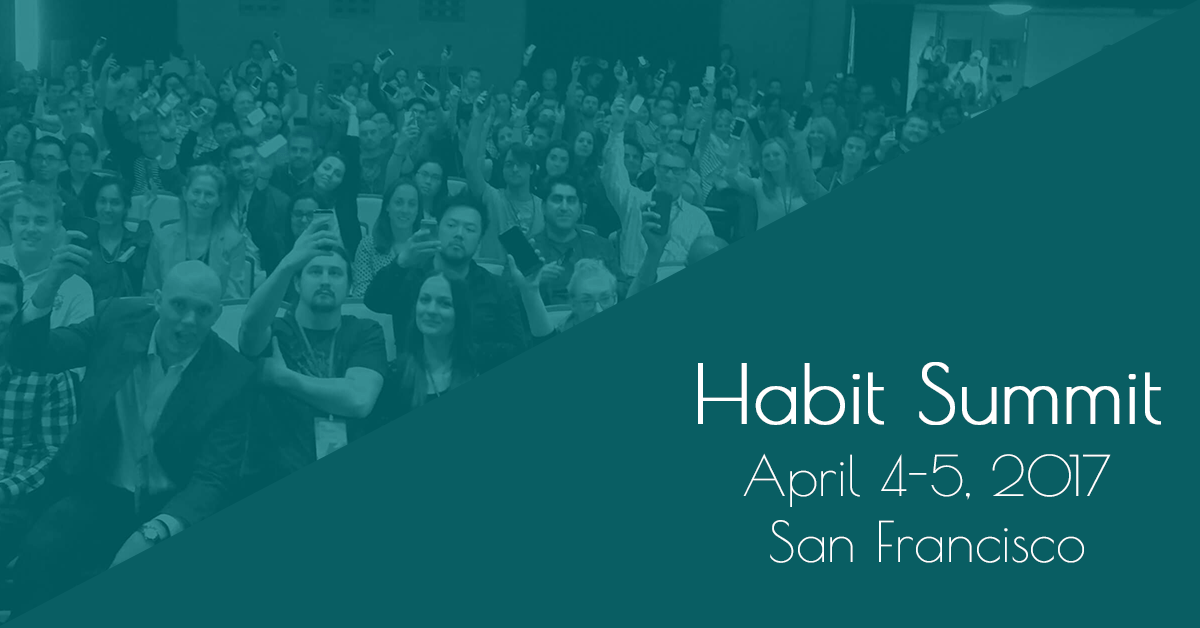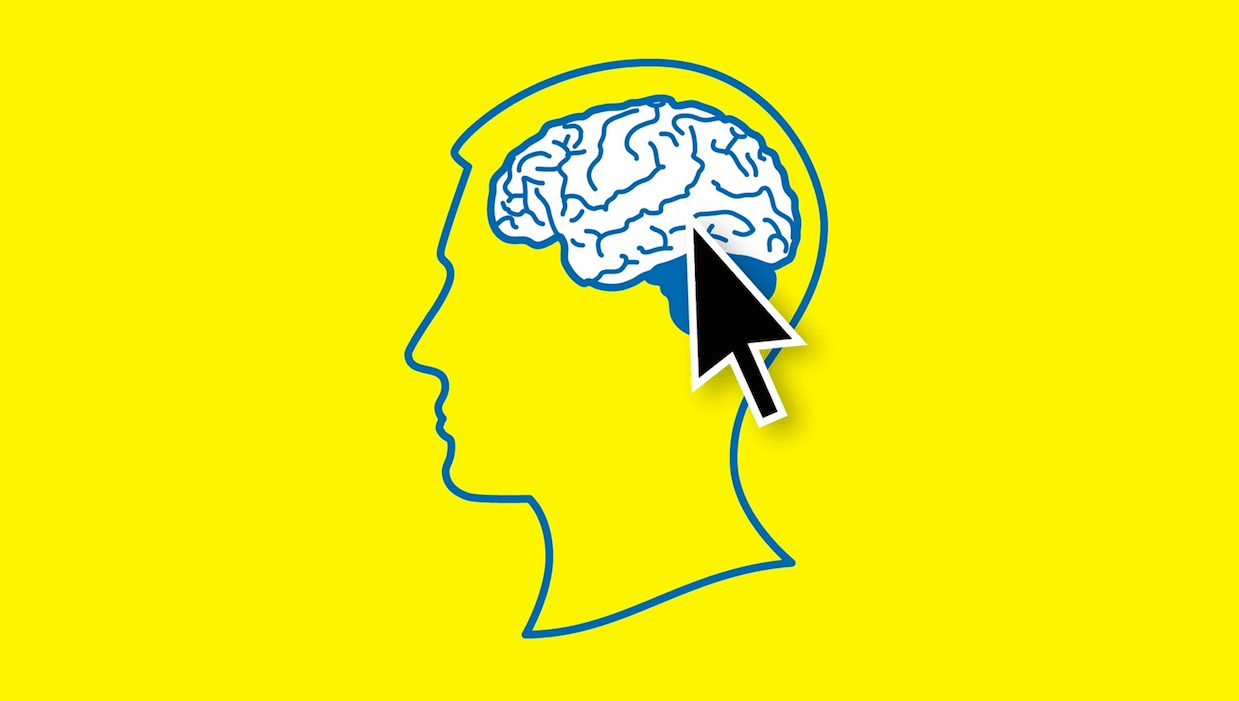Have you ever wondered what products like Facebook, Netflix, Snapchat or even Apple have in common? It’s simple! They have us hooked. These products have become part of our daily lives, they have become a habit. The first thing we do in the morning is scroll through our Facebook’s newsfeed and before we go to bed we’ll put on Netflix to watch our favorite series. Some of these products have even become verbs: I’ll facebook you, what are you doing tonight? Hmm just going to Netflix. The question is; is there a formula behind designing habit-forming products?
For this Designer Chat, we sat down with Nir Eyal, the author behind “Hooked: How to Build Habit-Forming Products” and asked some questions on the importance of prototyping in building habit-forming products and the Hooked Model.
You can read our conversation below and as a special gift, Proto.io users will get $150 off Nir Eyal’s Habit Summit tickets which will take place on April 5th in San Francisco. Simply use promo code “Proto.io” when buying your ticket here.
Thanks Nir :)
Given that the Hooked process happens over time through sequential stages of activity (Trigger, Action, Variable Reward, Investment) using a built product, how can you potentially explore the behavior design earlier in the product process using a non-coded prototype?
That’s a terrific question. The hook model is really useful in two places. It’s good in the very early stages of product development and it’s good at the very last stages. In the early stages it’s useful before we spend any money on coal or designers or engineering or anything of that stuff by sitting down with a piece of paper and these five fundamental questions associated with the hook model. What’s the internal trigger, what’s the external trigger, what’s the simplest action done, anticipation of reward, is the reward fulfilling and yet leaves the user wanting more, and then finally what’s the bit of worth the investment that the user makes to increase the likelihood of the next pass of the hook. Answering those five fundamental questions will save ourselves a ton of time, money, effort, blood sweat and tears to figure out if this product has the potential to be habit forming in the first place.
The hook model is useful in the very last stages of product development as a diagnostic tool. Many times I get called in by venture capitalists or entrepreneurs who have a product that was growing, they figured out some viral channel, but then user growth stopped and they start losing users, we call those businesses leaky buckets. I’m the plumber that tries to plumb up the leaks, to try and figure out why users aren’t sticking around. If you can’t keep users coming back, it doesn’t matter what your growth rate looks like, you’ve got nothing. When you’re just starting out and if you are not retaining users, if you can’t figure out why your product isn’t engaging why isn’t it habit forming then it’s a good diagnostic tool to figure out how you can hopefully fix it.
Are there effective ways to test your assumptions of what may create internal triggers before a functioning product is there?
One of the best things you can do is look for nascent behaviors. Look for where people have existing habits which are unnecessarily difficult. Find where people are doing things by stitching different technologies together that weren’t using them for the intended purpose. Where are people putting together scotch tape and bubble gum to try and find solutions that are not currently in the market by trying to hack their own solutions. You always want to find existing habits, existing solutions to people’s problems so that you can fix them in a better way.
Another way to do that is to keep asking why. The five why’s technique has been around for a long time and I think it started with the Toyota processing system. But I think there’s more to it, you don’t just stop at the functional answer, you have to go all the way down to the emotional level. So you got to keep asking why’s until you get to some kind of need, some kind of pain point on a psychological level because, the only reason we use any product or service is to modulate our mood. If you are building a habit forming product you have to be able to tell me what is that internal trigger. Many people don’t take the time to try to figure out what that is but it’s absolutely critical so that we can build a product that scratches that that frequently occurring itch.
Could there be a “habit creation sprint”? Is that an oxymoron?
I think that the standard process here is you still have to do build-measure-learn, you still have to go through these three steps that are espoused in the lean started methodology by Eric Ries, Steve Blank and many other people who propose this idea of building something, testing it, learning from it so that you can improve the product. That doesn’t go away with the hook model, in fact doing a sprint is a fantastic way. My good friend Jake Knapp at Google Ventures who wrote the book Sprint and it fits hand in glove with the hook model which is intended to help you come up with better product hypotheses.
What I found is a huge struggle of many startups is they have tons of ideas. They’re rich in ideas but they’re poor in prioritization and that’s a killer. That’s a big waste of time, you’re spending money, you’re spending time or spending effort on something that’s not going to bear fruit. And that’s a huge mistake. So the hook model is there to help you prioritize, to figure out what to do first, second, third instead of guessing and asking customers even, instead of what you’re doing is starting with some kind of psychological basis for why this hypothesis that you’re going to test comes first, second, or third.
Perhaps a diary study using a prototype to determine if a person is showing the early signs of an internal trigger being formed? What are the early signs to look out for?
So what I like to do is to look for what they are currently doing what the behaviors are currently occurring. I think you can prototype all different kinds of solutions to figure out what might work better. I think where prototyping is particularly helpful is to figure out if something is actually easier to do. The second step of the hook model is the action phase and that’s all about making the intended behavior easier to do. So little insight that you can gain over how you can save a few steps here or there, a few clicks, a few taps; if it’s a physical product how can you save a little bit of effort. By doing rapid prototyping within your app within your website, even with a physical good, it’s going to tell you a ton about how you save steps. The more steps you save the more delightful the experience and the more likely people are to move to the hook with less friction.
Technology is constantly getting better and better! How do you think VR and AR will change our habits?
Virtual and augmented reality are a logical leap when it comes to the next step of many technologies, certainly when it comes to entertainment. VR stands for virtual reality, in my mind it also stands for variable rewards and I think that when it comes to anything that is more exciting, more interesting, more immersive, it’s using these principles of a variable reward to keep us hooked. The center of the hook model is this uncertainty, this unknown, me to figure out. It’s what makes gameplay interesting, it’s what makes movies exciting, it’s what makes the news something that we want to keep up with. Any product that can tell great stories in these new mediums of VR or AR is going to become more habit forming probably even addictive to some people. It shows a lot of promise for making opportunities and experience, even more engaging.
Why hasn’t VR managed to get users ‘Hooked’? Yet.
Like every good technology the first few stages or the first few generations always look clunky. They always look like they’re not going to go mainstream. Think about the first massive cell phones that were expensive and looked ridiculous and only the super rich who really needed those huge Motorola brick phones; they were terrible compared to what we can do today on any iPhone. This is what always happens, the first iterations of a technology suck. There are lots of things about VR that are still too cumbersome. You get VR face for example when you put on the goggles They’re sweaty they’re uncomfortable they’re heavy they leave big red lines on your face. So that’s a simple problem it really does keep people from using these devices because you know after a while you can’t anymore it’s just it’s it doesn’t feel good. Of course you know between these different constraints things will get better. The experience will get better and better. I think the reason it hasn’t taken off yet is because just too early that the kinks haven’t been quite worked out yet.
But who knows what kind of an impact it’s going to have. But certainly, there’s going to be all sorts of applications that we can’t even imagine today that are going to come to fruition as the technology gets better and more comfortable, cheaper. We’re going to see more and more use cases.
Habit Summit started in 2013, with this year’s Summit coming up in April. What would you say has been the biggest fundamental change in user behavior over the last 4 years since the first Summit started?
I think we’ve seen obviously an explosion of different use cases for mobile devices. We certainly see a lot a lot more competition when it comes to the mobile interface. I think what’s new and exciting over the past year is this new development of what I call the conversational user interface. So we’ve gone from a screen based interface to now conversational UIs and voice UIs. So when you think about bots, a system as an app, or voice interfaces like Amazon’s Alexa or Microsoft’s Cortana or Apple’s Siri; this presents a whole new opportunity to hook people in new ways. Every time there’s an interface change, every time the way we interact with technology evolves there’s a new opportunity for young companies to jump in and build new habits that other big companies haven’t yet established a foothold. That’s something that’s very exciting.
What would be one piece of advice you would give to a young entrepreneur getting started today looking to build the next big habit forming product?
Ok so, I’ll combine two pieces of advice together because there’s a two part test. I want people to take when they think about how to apply habit forming technology for good, and to answer this question of where should I spend my time, what should I be doing in terms of building these products to persuade folks to create healthy habits in their lives. The two part test is, number one, are you building something that you believe materially improves people’s lives? Think when you look yourself in the mirror and you say OK is this thing that I want to build something that materially improves people’s lives? The second question is am I the user? By building a product that you yourself would use you have a huge strategic advantage, and that advantage is that you deeply understand your customer. I see way too many entrepreneurs building products for people that they don’t understand. It is incredibly difficult to understand consumers’ needs. The way to hack that process is to build something that you truly need. That is an immense competitive advantage and if we think about products like, Facebook and Slack and Instagram and WhatsApp and Snapchat they were built by people who deeply understood their customer because they were the customer. So my biggest piece of advice is scratch your own itch, build something that you yourself need.
Lastly, are there any ethical considerations behind creating products that get people ‘hooked’?
There are lots of ethical considerations. I will say that if you follow that two part test of building a product that you believe materially improves people’s lives and that you are the user, that’s a pretty good ethical bar. The reason why is that I am making people break the first rule of drug dealing which is “Never get high on your own supply”. By forcing you to pass that two part test of being the user, if there are any deleterious effects to the product, guess what? You’re going to know about it because you’re the user.
So I think that takes care of a lot of these ethical concerns as long as we don’t build products that are coercive. It’s unethical to build products that trick people, that tell people to do things they wouldn’t otherwise want to do. We’re also not allowed to keep people addicted. if you know someone wants to stop but can’t then that crosses a moral line, that’s unethical. That’s not habit formation, habit formation is just helping people do things they want to do with little or no conscious thought. For example, exercise, eat better, communicate with family, save money. These are all things that can become part of your habits for good. They help you live a better life. These aren’t necessarily addictions unless they hurt you. An addiction has to be defined as something that harms the user and they can’t stop doing so. That’s not ethical but forming healthy habits is something that should be encouraged. Forming healthy habits helps people improve their lives.








